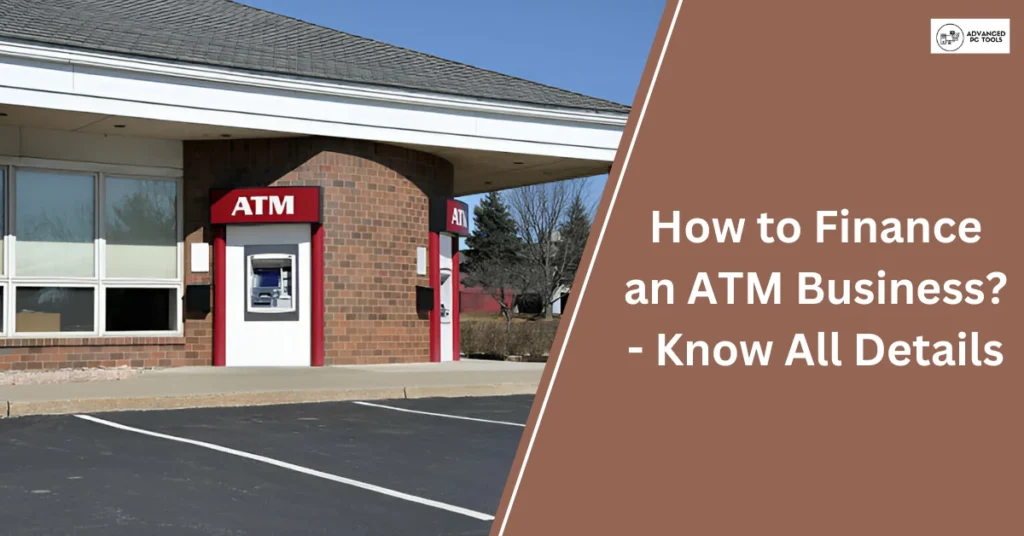Starting an ATM business can be a lucrative venture, but it requires a significant investment. As an entrepreneur, you need to explore various financing options to fund your business. In this article, we will delve into the world of ATM financing and provide you with a detailed guide on how to finance an ATM business.
Table of Contents
Understanding the ATM Industry
Before we dive into the financing aspect, it’s essential to understand the ATM industry. The ATM market is growing rapidly, with millions of ATMs installed worldwide. The demand for ATMs is driven by the increasing need for convenient and accessible banking services.
Initial Investment Requirements
Starting an ATM business requires a significant initial investment. Here are some of the estimated costs:
- ATM machine cost: $2,000 to $10,000
- Installation cost: $500 to $2,000
- Initial cash loading: $1,000 to $5,000
- Marketing and advertising: $1,000 to $5,000
- Miscellaneous expenses (insurance, licenses, etc.): $1,000 to $3,000
Total estimated initial investment: $6,500 to $25,000
Financing Options for ATM Business
Now that we have an idea of the initial investment required, let’s explore the financing options available for an ATM business:
- Self-Financing: Self-financing is the most common method of funding an ATM business. You can use your savings, emergency fund, or other personal resources to finance your business.
Pros:
- No debt or interest payments
- Full control over the business
Cons:
- Limited funds
- Risk of depleting personal savings
- Small Business Loans: Small business loans are available from banks, credit unions, and online lenders. These loans can be used to finance the initial investment, including the ATM machine, installation, and initial cash loading.
Pros:
- Access to funds for business growth
- Fixed interest rates and repayment terms
Cons:
- Requires a good credit score
- Collateral may be required
- Interest payments and fees
- Line of Credit: A line of credit is a revolving loan that allows you to borrow funds as needed. This type of financing is suitable for ATM businesses with fluctuating cash needs.
Pros:
- Flexibility to borrow and repay funds
- Interest payments only on borrowed amount
Cons:
- Requires a good credit score
- Interest rates and fees may apply
- Risk of overspending
- Investors and Partnerships: You can seek investment from private investors, venture capitalists, or partners. This type of financing can provide the necessary funds for business growth.
Pros:
- Access to funds for business expansion
- Shared risk and expertise
Cons:
- Loss of control and equity
- Pressure to generate returns on investment
- Crowdfunding: Crowdfunding platforms allow you to raise funds from a large number of people, typically in exchange for rewards or equity.
Pros:
- Capital contributions from a diverse pool of investors or crowdfunding sources.
- Marketing and promotional benefits
Cons:
- Risk of not meeting funding goals
- Fees and commissions apply
- Equity dilution
- Equipment Financing: Equipment financing options are available for ATM machines and other equipment. This financing option enables you to obtain essential equipment without depleting your operational funds, thereby maintaining your business’s liquidity and financial flexibility.
Pros:
- Preservation of working capital
- Flexibility to upgrade or replace equipment
Cons:
- Interest payments and fees
- Risk of equipment obsolescence
- Merchant Cash Advance: A merchant cash advance is a type of financing that provides a lump sum payment in exchange for a percentage of future credit card sales.
Pros:
- Quick access to funds
- Flexibility to repay funds based on sales
Cons:
- High interest rates and fees
- Risk of cash flow problems
Tips for Securing Financing for Your ATM Business
Securing financing for your ATM business can be challenging, but here are some tips to increase your chances of success:
- Develop a comprehensive business plan: A well-written business plan will help you articulate your business vision, financial projections, and marketing strategy.
- Improve your credit score: A good credit score will increase your chances of securing financing at favorable interest rates.
- Provide collateral: Offering collateral, such as equipment or property, can reduce the risk for lenders and increase your chances of securing financing.
- Explore alternative financing options: Consider alternative financing options, such as crowdfunding or equipment financing, to access funds that may not be available through traditional lenders.
- Build a strong relationship with your lender: Developing a relationship with your lender can help you secure financing and negotiate favorable terms.
- Be prepared to answer questions: Be prepared to answer questions about your business, financial projections, and marketing strategy.
- Consider working with a financial advisor: A financial advisor can help you navigate the financing process and identify the best financing options for your business.
Common Mistakes to Avoid When Financing an ATM Business
- Insufficient cash flow: Ensure that you have sufficient cash flow to repay loans and cover business expenses.
- Inadequate financial planning: Develop a comprehensive financial plan to ensure that you have sufficient funds to cover business expenses and repay loans.
- Failure to explore alternative financing options: Consider alternative financing options, such as crowdfunding or equipment financing, to access funds that may not be available through traditional lenders.
- Poor credit management: Maintain a good credit score to increase your chances of securing financing at favorable interest rates.
Conclusion
Financing an ATM business requires careful planning and research. We hope with the expert advice from Advanced PC Tools, you now have a comprehensive understanding of How to Finance an ATM Business and the tips to secure the funds you need. By following the guidelines outlined in this article, you can increase your chances of securing the funds you need to grow your business. Remember to avoid common mistakes, such as insufficient cash flow and inadequate financial planning, to ensure the long-term success of your ATM business.
Frequently Asked Questions (FAQs)
What is the average cost of starting an ATM business?
The average cost of starting an ATM business can range from $6,500 to $25,000, depending on the number of ATMs, installation costs, and marketing expenses.
What are the most common financing options for ATM businesses?
The most common financing options for ATM businesses include small business loans, lines of credit, equipment financing, and merchant cash advances.
How can I improve my chances of securing financing for my ATM business?
You can improve your chances of securing financing by developing a comprehensive business plan, improving your credit score, providing collateral, and exploring alternative financing options.




